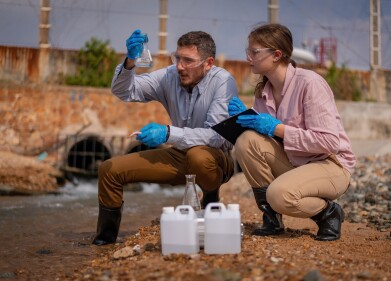Water/wastewater
3-D printing expedites R&D in flow meter technology
Apr 18 2023
Titan Enterprises is leveraging the power of 3-D printing to accelerate its research and development (R&D) efforts, particularly for specialist designs for original equipment manufacturer (OEM) applications, according to Neil Hannay, Senior R&D Engineer at Titan Enterprises.
With a focus on innovative solutions for OEM customers and pushing the boundaries of product performance and physical properties, Titan has been utilising 3-D printing technology for design purposes for over 5 years. The company initially adopted a state-of-the-art Fused Deposition Modeling (FDM) printer. However, recent advances in 3-D printing technology prompted Titan to invest in a new printer at a fraction of the cost, but with increased capabilities.
The new UV resin printer employed by Titan offers improved precision, detail, and durability compared to the previous FDM printer, enabling greater fidelity and facilitating highly iterative design. In addition, the resin printer allows for the printing of replacement parts and tools in-house, providing increased flexibility and efficiency in the R&D process.
"Being able to make small, precise changes to designs during the development process to test functionality and performance has allowed us to fast-track our design iterations," said Neil Hannay. "This gives our R&D design engineers more freedom to experiment with novel designs at a lower cost in terms of both time and money, thanks to rapid prototyping. Models and components can be tested, pushing the boundaries of concept design, durability, and size in a short amount of time. Once we have a tested and performing prototype that we have a good level of confidence in, it can then be sent to our injection moulding suppliers for production of a customer prototype."
One recent example of Titan's utilization of 3-D printing in R&D is in the development of an OEM turbine, where the printer was used to size and fit the flowmeter's externals to the customer's equipment and conduct preliminary integrated performance tests. The use of transparent materials in the printing process allowed Titan's R&D engineers to visually examine the internal manufacture, fit, and operation of the flowmeter, significantly expediting the product development process. In the past, early prototypes were produced using CNC, which is time-consuming and costly. With an in-house 3-D printer, new iterations can be quickly modified and tested on the same day as conception, enabling faster product development.
Titan's non-metallic flow meters, including the NSF-Approved 800-series turbine meters and Beverage flowmeters used extensively in a variety of industries, are particularly suited to the 3-D printing process for development, advancement, and enhancement of designs.
Digital Edition
IET 35.2 March
April 2025
Air Monitoring - Probe Sampling in Hazardous Areas Under Extreme Conditions - New, Game-Changing Sensor for Methane Emissions - Blue Sky Thinking: a 50-year Retrospective on Technological Prog...
View all digital editions
Events
Apr 10 2025 Beijing, China
Apr 10 2025 Beijing, China
Apr 10 2025 Beijing, China
Apr 21 2025 Shanghai, China
Apr 22 2025 Hammamet, Tunisia






















